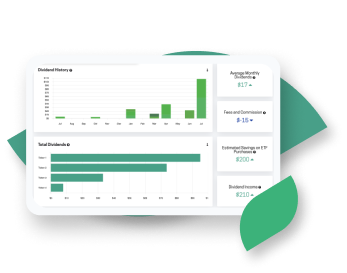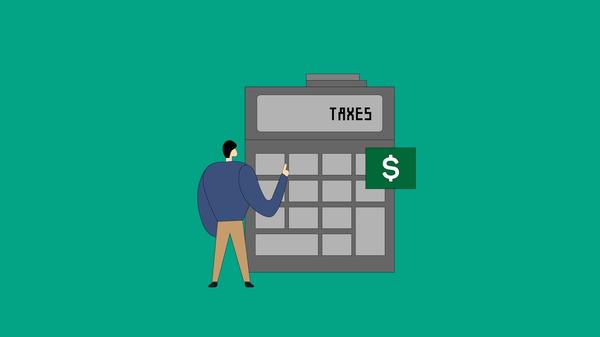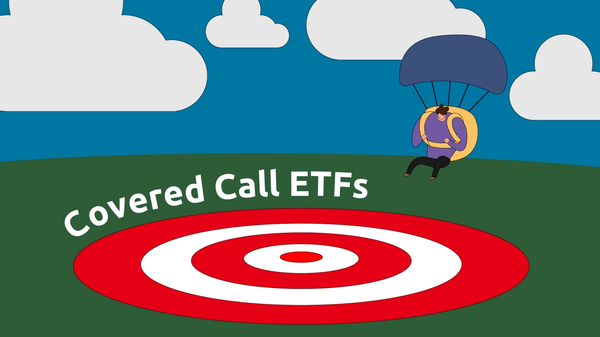As the old saying goes, nothing is certain except death and taxes. Yet while we all shuffle off the mortal coil, you can and should minimize how much tax you owe so you can enjoy your dream retirement. By taking advantage of registered accounts and arranging your investments properly, you'll pay less in tax each year, both while you're working and when you retire. First, let's look at tax-sheltered accounts.
Tax-sheltered accounts
To make sure you're getting the most bang for your buck, park your investments in tax-sheltered accounts like the well-known Registered Retirement Savings Plan (RRSP) and the newer Tax-Free Savings Account (TFSA). Here's a simple breakdown on your contribution limits:
- Your RRSP contribution limit is 18% of the income you've claimed in your tax returns, up to a limit that changes each year ($30,780 for 2023).
- As of 2023, your total TFSA contribution limit might be as high as $88,000 as long as you were 18+ when it was introduced in 2009 and you've been a Canadian resident for tax purposes since then.
For both accounts, your contribution room from previous years rolls over if you don't use it. If you're unsure about your contribution limits and how much you've contributed already, log in to your CRA account to see how much room you have left, but be aware that it may only be updated in March each year.
To see just how much you'll be saving in tax by using your TFSA, take a look at this calculator by the Ontario Securities Commission. They also have a handy RRSP calculator to estimate how much your RRSP will be worth by retirement as well as how much income it will provide you with each year.
Decrease your taxable income with RRSP contributions
When you earn income, you owe income tax. But when you contribute to your RRSP, it reduces your taxable income by that amount and you'll get a tax refund.
For example, to make the math easy, let's say you earn $100,000 and contribute the maximum $18,000 to your RRSP. In the eyes of the government, your income was $82,000 and they owe you back any tax you paid on that extra $18,000. The exact refund amount will depend on your province/territory, but you can check your own numbers here. You can then turn around and put your tax refund into your TFSA to accelerate your savings.
Remember that if you have a group RRSP through your employer plus a personal RRSP account, you'll need to keep track of contributions to make sure you stay under your contribution limit.
While paying less tax is a reward on its own, there's one more important reason to contribute to your RRSP: the lower your taxable income is, the more benefits you may be entitled to. This is especially true for a family with children because the Canada Child Benefit depends on parental income.
How to earn tax-free income in retirement
The name Tax-Free Savings Account is misleading — probably by design. By calling it a savings account, the government ensured that many Canadians would park their cash in a high-interest TFSA, collect their measly interest tax-free and call it a day.
That's a mistake, because the real magic of the TFSA comes from buying high-growth assets, letting the gains compound tax-free for decades, and then withdrawing your nest egg in retirement — completely tax-free. Because you contributed after-tax dollars to your TFSA, the government already got its share. Now the rest is yours to keep. That's why a large TFSA is a great asset to have in retirement.
Plus, there's one more major reason TFSAs are amazing retirement vehicles: if you already have retirement income from another source, your TFSA withdrawals won't push you into a higher tax bracket. They also won't result in clawbacks to any federal income-tested benefits or credits such as OAS, CPP, or EI.
Now, while you're still building up your TFSA, you should understand that your TFSA contribution limit is just that: how much you're allowed to contribute. But the value of your TFSA can quickly exceed your contribution limit. That's because capital gains and dividends increase the value of your TFSA but that growth doesn't count toward your contribution room.
That last sentence is worth repeating: any growth in your TFSA does not count toward your contribution room.
For example, say you put $5,000 into a stock that doubled in value to $10,000. You've just added $5,000 to your TFSA size. If you sell that stock and withdraw the cash, the following January 1 you'll get that $10,000 in space back plus the annual contribution limit ($6,000 in 2019). Because of this completely legal "growth hack", many Canadians already have TFSAs worth well over $100,000+ even though the maximum lifetime contribution limit as of 2023 is just $88,000.
Now, before we move on, a note of caution: it's true that when you experience a capital gain in your TFSA, your total room grows. But the reverse is also true: when you experience a capital loss, your TFSA room shrinks. Only buy assets with high growth potential (and therefore higher volatility) if you have a long enough time horizon to hold on without selling during the inevitable downturns. If you treat your TFSA as your emergency fund, then keep low volatility assets in it instead.
Keeping it in the family
If you've maxed out both your RRSP and your TFSA, congratulations! You're a saving superstar.
Got a spouse? Congrats, your family's tax-sheltered room just doubled (roughly — your RRSP room won't be exactly the same).
Got kids? You can take advantage of the Registered Education Savings Plan (RESP) for even more tax-sheltered growth. The withdrawals are taxed in your child's hands and since they'll be students, they'll likely be in a lower tax bracket than you and might not owe any tax at all if tuition credits bring their taxable income under the personal income threshold (about $11,000, but check the latest number for your province/territory).
I've run out of tax-sheltered space, now what?
Now, if you've taken full advantage of all the registered (tax-sheltered) accounts available to you, you'll need a non-registered (taxable) account. You'll then want to arrange your assets across your registered and non-registered accounts so that you owe as little tax as possible.
How different asset classes are taxed in a taxable account
Assets held in a taxable account are, as the name suggests, taxable. However, you can optimize the location of your assets across taxable and tax-sheltered accounts for tax efficiency. Here are the types of tax that apply to different asset classes:
Canadian Bonds/GICs: All interest earned is added to your income and taxed at your marginal (top) tax rate. This is the least tax efficient way to earn income, so avoid owing tax on it by putting these assets in tax-sheltered accounts. Since bonds/GICs aren't expected to experience high growth, you're better off putting them in your RRSP and saving your TFSA room for high-growth assets because RRSP withdrawals are taxable but TFSA withdrawals are not.
Canadian REITs: Real estate investment trusts pay out rental income that gets taxed like regular income, much like the interest received from bonds and GICs. Keep them where you keep your bonds: in tax-sheltered accounts. Unlike bonds, REITs have a higher potential for growth so it's fine to put them in your TFSA if your RRSP is already full of bonds and US equities.
Dividend-paying US equities: The US does not recognize the TFSA as a retirement/tax-sheltered account, but it does recognize the RRSP. To avoid a 15% withholding tax on US dividends, put US assets in your RRSP. Do not put them in your TFSA.
If your RRSP is full, US equities can go in your non-registered account.
International dividends: Foreign dividends are taxed at your marginal (top) tax rate. Put international equities into TFSAs, then RRSPs, then your non-registered account because you're expecting equities to be high growth, but their dividends don't qualify for the dividend tax credit. It's important to know that when you buy a Canadian ETF or mutual fund that holds foreign dividend-paying equities, you'll still be taxed the foreign dividend tax rate.
Canadian eligible dividends: The Canadian government wants to incentivize Canadians to invest in Canadian companies so Canadian dividends are more favourably taxed than foreign dividends. O Canada! There are two types of Canadian dividends: those eligible for the advanced dividend tax credit and those that aren't. In general, dividends received from Canadian public companies are eligible and those from private companies/small businesses are not. Note that as your income goes up, Canadian dividends become less tax-efficient.
Since equities are high-growth, you can stash Canadian equities in your TFSA. If your TFSA is full with international equities, then shift Canadian equities to your non-registered account because Canadian dividends are favourably taxed. Leave your RRSP room for bonds and US equities, because you'd get hit with a bigger tax bill if these were in your non-registered account.
Canadian preferred shares: These pay dividends that are tax-efficient, so if you have no space left in your TFSA or RRSP, they'll do just fine in your non-registered account with your Canadian equities.
Note that you pay tax on dividends in the year you earned them, not the year you withdraw them. So even if you were to reinvest dividends (say through a dividend reinvestment plan or DRIP), you would still have to pay the tax that year.
Capital gains: An increase in the value of your investment is called a capital gain. Capital gains are taxable when the investment is sold. At that time, 50% of the capital gain is added to your income and taxed at your marginal rate. There are a variety of ways to legally reduce the amount of tax you owe on capital gains. Capital gains are taxed the same way for US equities as they are for Canadian equities, so if you have US non-dividend paying equities, they can go in your TFSA. As mentioned above, any dividend-paying US equities should go in your RRSP because the US does not recognize the TFSA as a retirement/tax-free account.
Return of capital: When an investor's original investment is repaid, it is not a taxable event.

Taxes add up
Taxes can take out a sizeable chunk of your wealth over time. Sign up with Passiv in less than three clicks and use our asset classes to prioritize asset allocation to limit your tax implications:
Get StartedTax efficiency in retirement
Why is tax efficiency so important? Because every extra dollar that stays in your portfolio contributes to compounding and grows your nest egg. And once you're retired, you can influence how much you pay in taxes based on where you draw your income — note that different types of income are taxed at different rates depending on which tax bracket you fall into! That'd be a whole article on its own but the link above has clear illustrations that show tax rates after age 65 and how income from different assets affects government benefits like GIS and OAS.
Finally, a caveat
While it's important to consider ways you can reduce the amount of tax you owe, don't put the cart before the horse: tax considerations should come after you've decided on an asset allocation that is in line with your personal risk tolerance and time horizon. For example, if the money in your TFSA is pegged for something like a down payment or car purchase in two years, then keeping that money in bonds or GICs is perfect for your financial goals. Keep your goals front of mind and use them to inform your investment and tax strategies.
We hope this article has been informative. Hopefully you now have a greater understanding of how to structure your investments so that you can keep more of your money. Thanks for reading!
Disclaimer: This article is for educational purposes and should not be construed as financial advice. It is up to you to do your own due diligence and consider consulting a tax accountant or financial planner with your personal situation, as everyone's differs and there are many factors at play.


